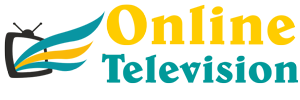
Let’s be honest. The tech world can seem like an exclusive club. You hear the buzzwords—APIs, agile sprints, cloud infrastructure—and it feels like everyone else is speaking a secret language. If you’re a marketer, a project manager, or a customer service pro, the idea of pivoting into a tech career can feel…daunting. Like trying to join a chess game halfway through without knowing the rules.
Well, here’s the deal: that feeling is a lie. Your non-technical background isn’t a liability; it’s your secret weapon. Tech companies are desperate for people who understand the most complex system of all: human beings. They need your skills. Let’s dive in.
Why Your “Soft Skills” Are Actually Tech’s Hard Currency
Think about what you do every day. You negotiate, you empathize with clients, you translate complex ideas into simple language, you organize chaos into a coherent project plan. These aren’t “soft” skills. They’re the bedrock of any successful tech product. A brilliant piece of code is useless if no one understands what it does, if the team building it is dysfunctional, or if it doesn’t solve a real human problem.
That’s your in. Your experience on the “people” side of business is a superpower. You already know how to bridge gaps—and in tech, the gap between what engineers build and what customers actually need is often a canyon.
The Hottest Roles for Non-Coders
You don’t need to become a software engineer to have a thriving tech career. In fact, some of the most in-demand roles are specifically designed for people with your profile.
- Product Manager: This is the orchestra conductor. You don’t need to play every instrument, but you need to understand the music. You’ll define the product vision, talk to users, prioritize features, and work with engineers and designers to bring it all to life. Your background in understanding client needs? Pure gold here.
- UX (User Experience) Researcher: This is the voice of the customer inside the tech machine. You conduct interviews, run tests, and uncover the pain points and desires of users. It’s part detective, part psychologist. If you’ve ever had to figure out why a customer was frustrated or what would make a service better, you’ve already been practicing.
- Sales Engineer / Solutions Architect: This role is the ultimate translator. You have the technical knowledge to understand the product’s capabilities and the communication skills to explain its value to non-technical clients. It’s a perfect blend.
- Data Analyst: Sure, this involves numbers, but it’s more about storytelling. You use tools like SQL, Excel, and Tableau to find patterns in data and tell a compelling story about what it all means. Your analytical thinking from, say, a finance or operations role is a huge head start.
Your Action Plan: From “I’m Interested” to “I’m Hired”
Okay, so you’re convinced. But how do you actually make the leap? It’s a marathon, not a sprint, but you can start today.
1. Audit and Translate Your Existing Skills
Grab your resume and a highlighter. Look for your accomplishments and reframe them in tech-friendly language. Managed a budget? That’s “resource allocation and P&L oversight.” Handled difficult clients? That’s “stakeholder management and conflict resolution.” Launched a new marketing campaign? That’s “project management and go-to-market strategy.” See how that works? You’re not starting from zero.
2. Learn the Lingo, Not the Entire Language
You don’t need a computer science degree. But you do need to be conversant. Think of it like moving to a new country. You don’t need to be a poet, but you should know how to order food and ask for directions.
| Concept to Learn | What it Really Means (The Non-Techie Version) |
| Agile & Scrum | A way of working in short, focused bursts (sprints) with daily check-ins to adapt quickly. |
| API | A messenger that allows two different apps to talk to each other and share data. |
| Backend vs. Frontend | The backend is the kitchen (where the food is made), the frontend is the dining room (what the customer sees and experiences). |
| UI/UX | UI is how it looks, UX is how it feels to use it. Good UI/UX is like a well-designed car dashboard—everything is intuitive. |
3. Build a “Proof of Concept” Project
Nothing speaks louder than showing, not telling. You don’t have to build a full app. But you can:
- Write a sample product requirements document (PRD) for an app you wish existed.
- Conduct a UX analysis of a website you find frustrating and present your findings.
- Analyze a public dataset and create a simple dashboard in Google Sheets.
Navigating the Mindset Shift
This is the part people don’t talk about enough. Tech culture is…different. It’s often less formal, more feedback-driven, and embraces failure as a learning tool. It can feel jarring.
You have to get comfortable with ambiguity. Projects pivot. Features get killed. The roadmap from January might be ancient history by June. This isn’t a sign of dysfunction; it’s a sign of a company that’s adapting to the market. Your ability to stay flexible and not get attached to a single plan will be invaluable.
And imposter syndrome? Yeah, it’s basically a universal experience in tech. Everyone feels it, from the junior dev to the CTO. The key is to acknowledge the feeling, and then focus on the value you are bringing. You are the expert on the user, on communication, on process. Own that.
The Final Word: You’re Already More Ready Than You Think
The bridge from a non-technical career into tech is not a rickety rope bridge over a chasm. It’s a well-trodden path. Thousands have made this journey before you. They’ve taken their experience in hospitality, teaching, retail, and finance and used it to build more human-centered, successful tech products.
Your perspective is the missing piece. While others are focused on how to build something, you’re focused on why it should be built and who it’s for. That is an irreplaceable, and frankly, marketable, skill. The tech industry is finally waking up to the fact that it needs more than just brilliant coders—it needs brilliant thinkers, communicators, and empathizers. It needs you.

